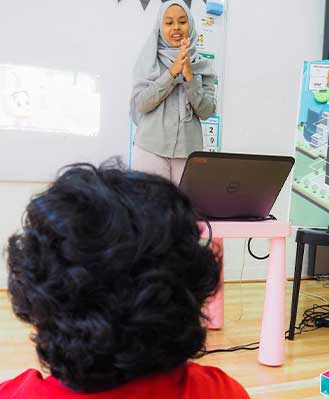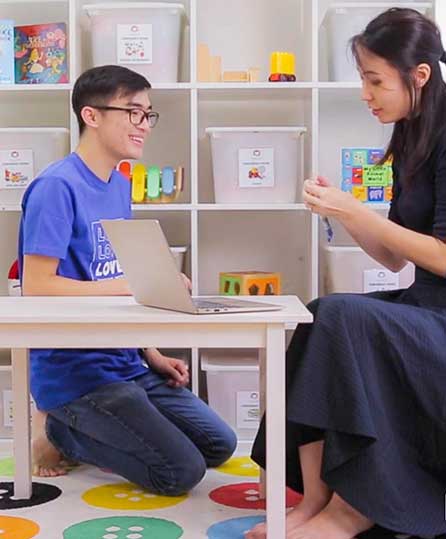0
Cart 0
Type and hit enter
There is no medical cure for autism at present.


Applied Behavioural Analysis (ABA) is the only teaching approach for autism supported by over 1000 journal articles based on controlled studies, post-treatment follow up data and peer-reviewed studies.
More than 40 states in the USA provide either state or insurance funding for ABA treatment.
Almost 50% of children with autism who receive good quality ABA at a young age will be able to catch up to their typically developing peers. The other 50% are able to show improvement in all areas as well such as reduction of challenging behaviours, increase of functional skills, communication, independence, etc. but at a more gradual pace.
According to the AMS-MOH Clinical Practice Guidelines for Autism Spectrum Disorder published by the Ministry of Health Singapore (2010), there are alternative treatments that are:
Due to insufficient, inconclusive or conflicting evidence
Due to potential harm and detrimental effects to the child
Alternative Treatment | Rationale/Mechanism | Potential Adverse Effects |
Sound therapies (SAMONAS Sound Therapy and the Listening Programme) | Improve abnormal sound sensitivity | Insufficient evidence |
Music Therapy | Musical elements to increase communication, attention, turn taking & social imitation | Insufficient evidence |
Massage and other sensory-based interventions | Improve a range of motor and sensory functions | Insufficient evidence |
Ingestible: Omega-3 Fatty Acids | Correct deficiencies | Insufficient evidence |
Ingestible: Amino Acids | Correct deficiencies | Insufficient evidence |
Gluten-free/ Cassein-free diet | Leaky Gut syndrome; Insufficient intestinal enzyme activity | Dietary restrictions may increase rigidity in feeding; Nutritial deficiencies; Irritability, aggression & inattentiveness |
Expressive Psychotherapy | Art elements to develop cognition, language, motor skills, self-expression and self-esteem, social and life skills | Insufficient evidence |
Behavioural Optometry | Correcting eye movement disorders – Filling gaps in unusual visual behaviour | Insufficient evidence |
Animal-assisted therapy | Different activities have different aims: Improve language & social skills; Teach responsibility & commitment; Increase attachment | Harm to child (Accidents, bites, scratches) & Harm to animal (Accidental agression) |
Alternative Treatment | Rationale/Mechanism | Potential Adverse Effects |
Weighted Vests | Reduce inattentiveness & stereotypic behaviour due to physical and sensory needs | Affect growth; Musculoskeletal development |
Secretin Therapy | Leaky gut syndrome; Secretine reduces behavioural characteristics of autism | Diarrhoea; Vomiting; Constipation; Irritability |
Patterning with Masking | Enhances oxygen uptake into blood stream; wearing mask to rebreath CO2 that was exhaled in last breath, opening up arteries and improving blood supply | Risk of brain damage; Physical harm |
Intravenous Immunoglobulin Therapy | Correcting autoimmune problems causing autism symptoms; via intravenous injections | Suppressing immune system; Mild eczema; Nausea and vomiting; Chills and fever; Hypo/ Hypertension; Rashes; Headache; Pain; Fear |
Hyperbaric Oxygen Therapy | Reduce inflammation of brain; Improve blood supply | Ear barotrauma; Pneumothorax; Oxygen-induced convulsions; Fire & explosions |
Holding Therapy | Autism is a result of parent’s failure to bond with child. Holding child tightly in a way that ensures eye contact; deliberately provoking distress until child needs and accepts comfort | Provoking distress; Rage; Force potentially evokes fear, confusion, anger, betrayal; Violation of child’s individuality; Traumatised; Harm to psychological health |
Facilitated Communication | Communicating through his/ her hand to the hand of the facilitator which then is guided to a letter, word, or picture on a keyboard | Possibly promoting independent communicators into passive communicators; Forced communication; Potential physical force |
Craniosacral Therapy | Gentle manipulation of skull, spine & soft tissue effect behavioural change | Nausea & vomitting; Confusion; Neurological concerns |
Chelation Therapy | Decrease toxic heavy metal (Childhood exposure to neurotoxins (Hg, Pb) believed to cause Autism) | Potential harm including death (hypocalcaemia); Hepatotoxity & Nephrotoxity; Stevens-Johnson syndrome |
Ingestible: Ascorbic Acid (Vitamin C), Digestive enzymes, Folate Vitamin B6/Magnesium Vitamin B12 Zinc Antibiotics/ Anti-Yeast Medication | Correct deficiencies | Adverse effects especially in high doses; overdose; Diarrhoea (Nystatin); Hepatotoxity |
Auditory Integration Therapy | Provide stimulation to hearing mechanism, thereby, providing ‘normal’ hearing and correcting anomalies that affect speech and language development, sensitivity, and learning delays | Output harmful to hearing and potentially dangerous |
Acupuncture | Unblocking flow of energy “qi” | Infection; Haemorrhage; Pain; Fear; Symptom aggravation |
References
Ministry of Health Singapore (2010). Complementary and Alternative Medical Therapies (ASD). Retrieved from: http://www.moh.gov.sg/content/moh_web/healthprofessionalsportal/doctors/guidelines/cpg_medical/2010/cpgmed_autism_spectrum_disorders_preschool_children.html
Kemper, K. J. (2008). The use of complementary and alternative medicine in pediatrics. American Academy of Pediatrics, 122 (6), 1374-1386.
Lovaas, O. I. (1987). Behavioral treatment and normal educational and intellectual functioning in young autistic children. Journal of consulting and clinical psychology, 55(1), 3.
Schreck, K. A. & Miller, V. A. (2010). How to behave ethically in a world of fads. Behavioural Interventions, 25 (4), 307-324.
McEachin, J. J., Smith, T. & Lovaas, O. I. (1993). Long-term outcome for children with autism who received early intensive behavioural treatment. American Journal of Mental Retardation, 97(4), 359-372.
Adding {{itemName}} to cart
Added {{itemName}} to cart